Viruses
1/36
There's no tags or description
Looks like no tags are added yet.
Name | Mastery | Learn | Test | Matching | Spaced |
|---|
No study sessions yet.
37 Terms
virus
submicroscopic particles whose genomes are elements of nucleic acid that replicate inside living cells using the cellular synthetic machinery for production of progeny virions (either RNA or DNA, never both)

The professor does not think that viruses are alive
The professor's old buddy John henry thought viruses were the most evolved living life form
host range
range of animal species and tissue cells that virus can infect (can be broad or limited)
capsomeres
morphological subunits from which virus capsid is built
the professor thinks of capsomeres as Legos or building blocks
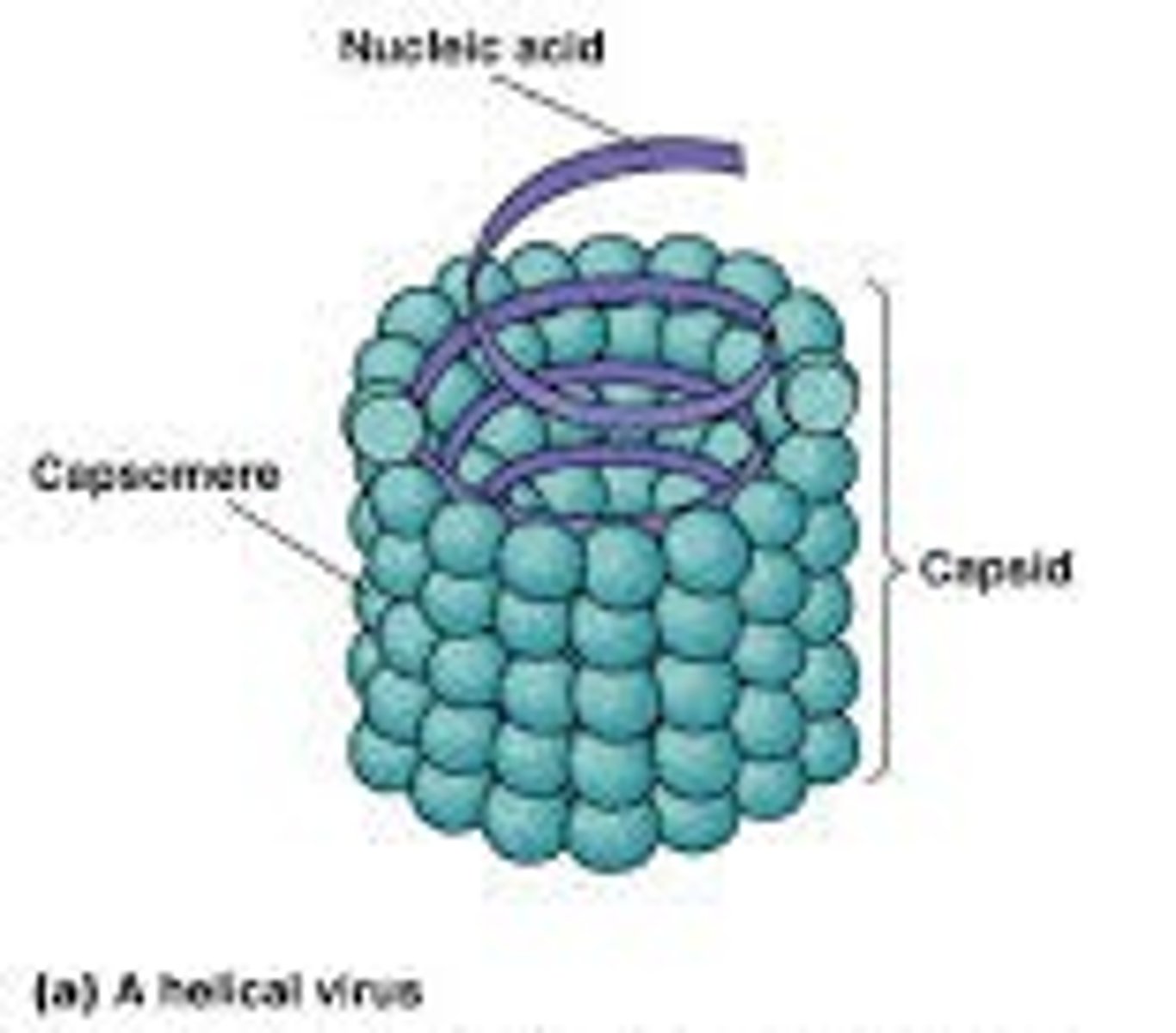
capsid
protein shell or coat that encloses nucleic acid genome
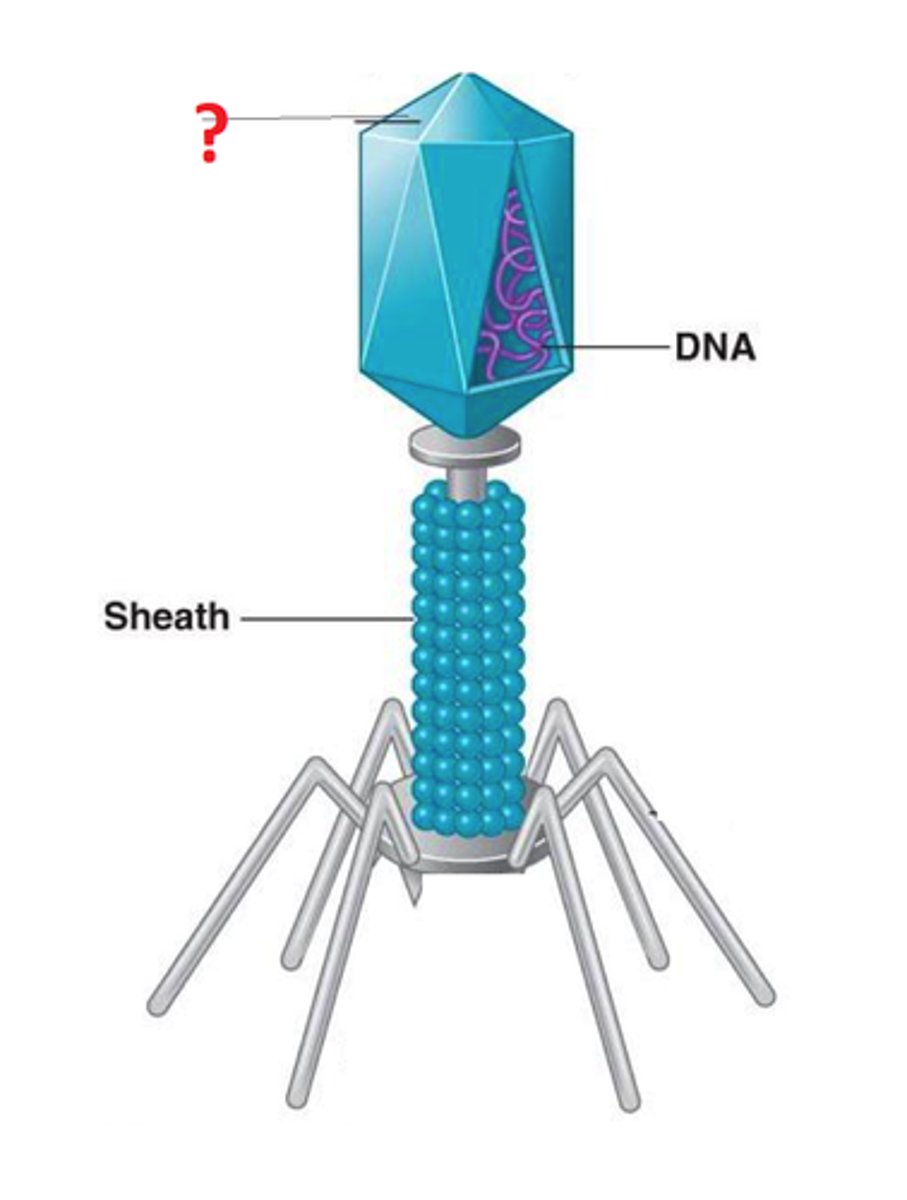
envelope
lipid-containing membrane that surrounds some viruses
naked virus
virus without an envelope
nucelocapsid
capsid together with enclosed nucleic acid
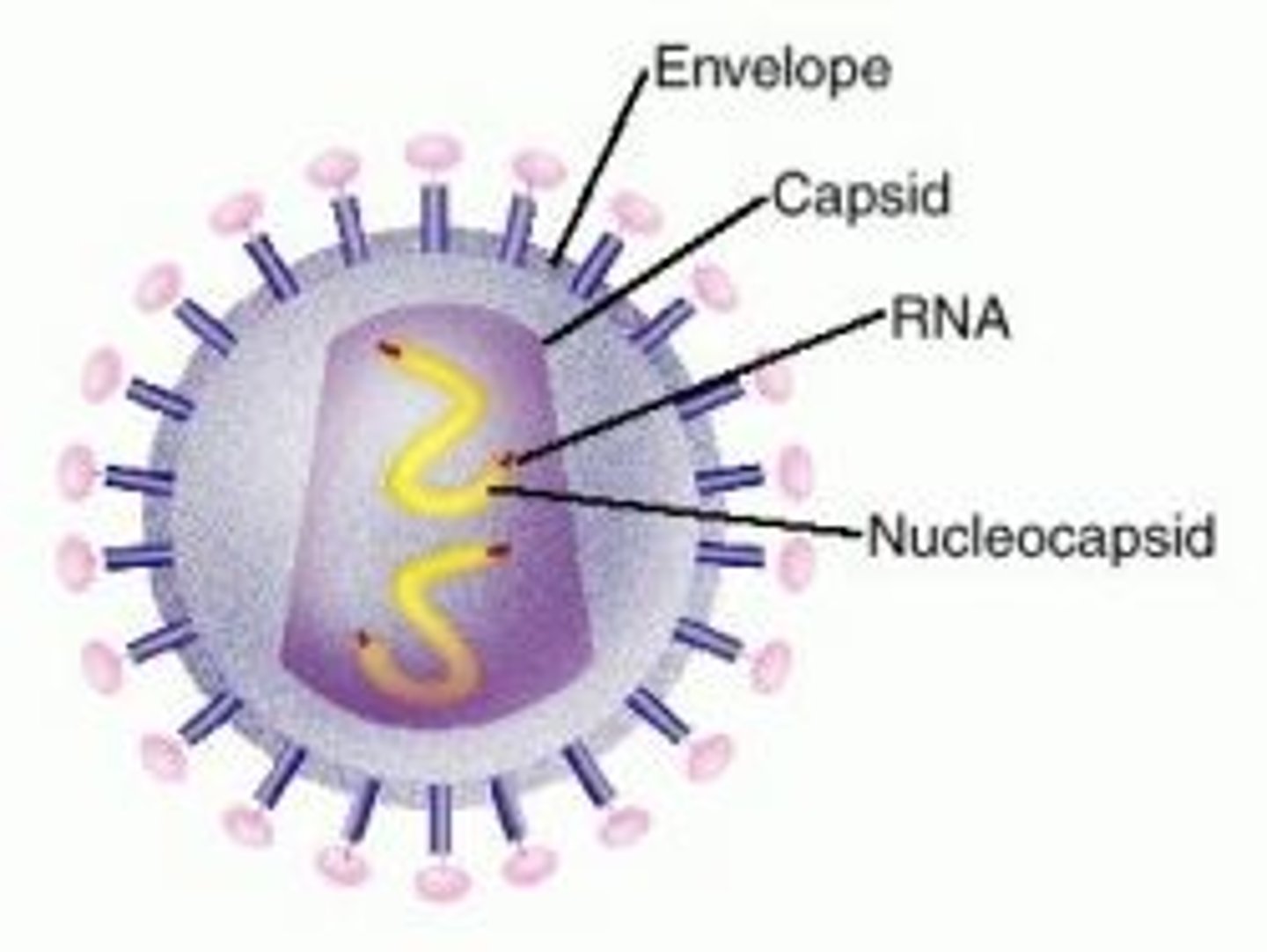
virion
complete infective virus particle (synonym)
incomplete virion
virion without nucelic acid (empty capsid)
pseudovirion
during viral replication, capsid sometimes encloses host nucleic acid rather than viral nucleic acid; looks like ordinary virus particles when observed by electron microscope, but do not replicate
provirus
viral DNA that is integrated into host cell chromosome in latent state and must be activated before it is transcribed, leading to production of progeny virions; transmissible from parent cell to daughter cells
Virion or virus (bacteriophage)
Consist of nucleic acid surrounded by protective protein coat (capsid)
virions are very small in size
Smallest virus = 20nm
Largest virus = 300nm
E.coli = 1000nm
Contain very few genes due to small size (4 up to 200 vs. 3000 for E.coli)
Contain either DNA or RNA, never both.
DNA can be either single-stranded or double-stranded
RNA can be either single-stranded or double-stranded
Most DNA viruses contain all their genetic information in a single linear molecule
RNA viruses can be linear or contain segmented genomes, which have several different RNA molecules in their capsid. Each one carries the same or different genetic information
Viruses lack cellular components necessary to generate energy and synthesize proteins
Contain few enzymes. Only those involved with entry into cells and replication of their own nucleic acid. Therefore, viruses can only multiply inside living cells
viruses contain a minimum amount of genetic information
Info to make its special protein coat
Info to assure replication of its own chromosome
Info to move the virions in and out of the host cell
helical (column) or spherical
Shape of virus is determined by shape of capsid:
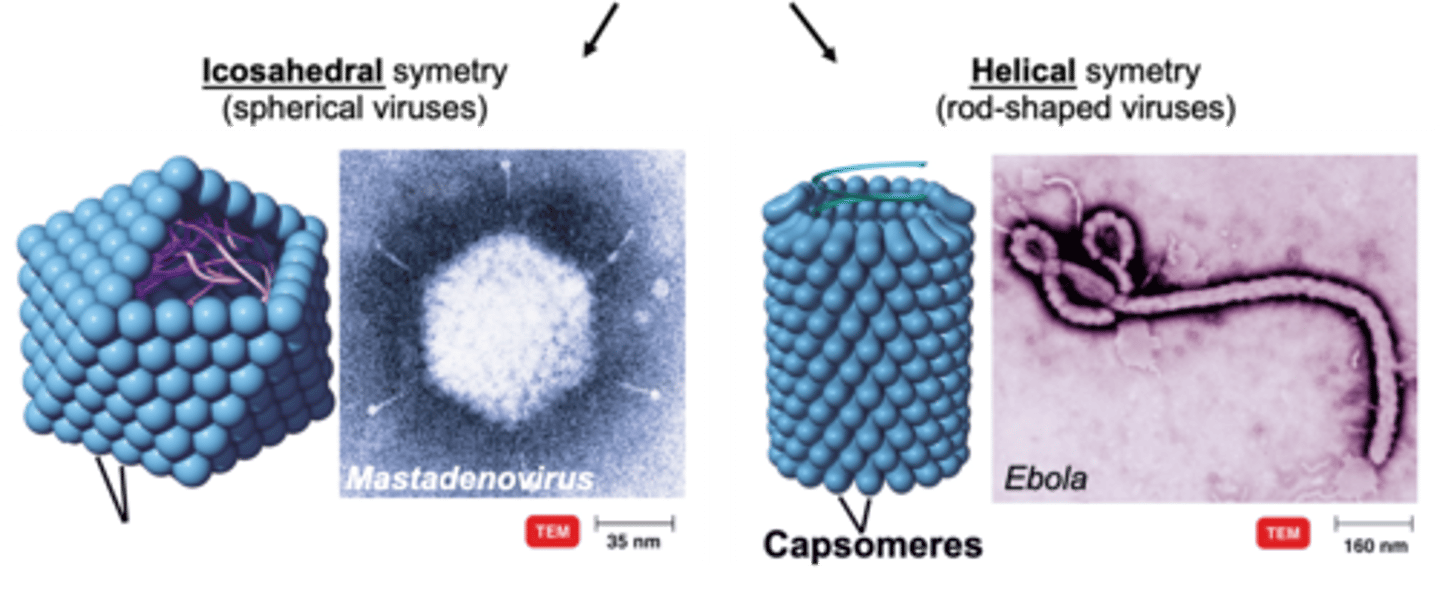
capsomeres
Each capsid is composed of many identical units:
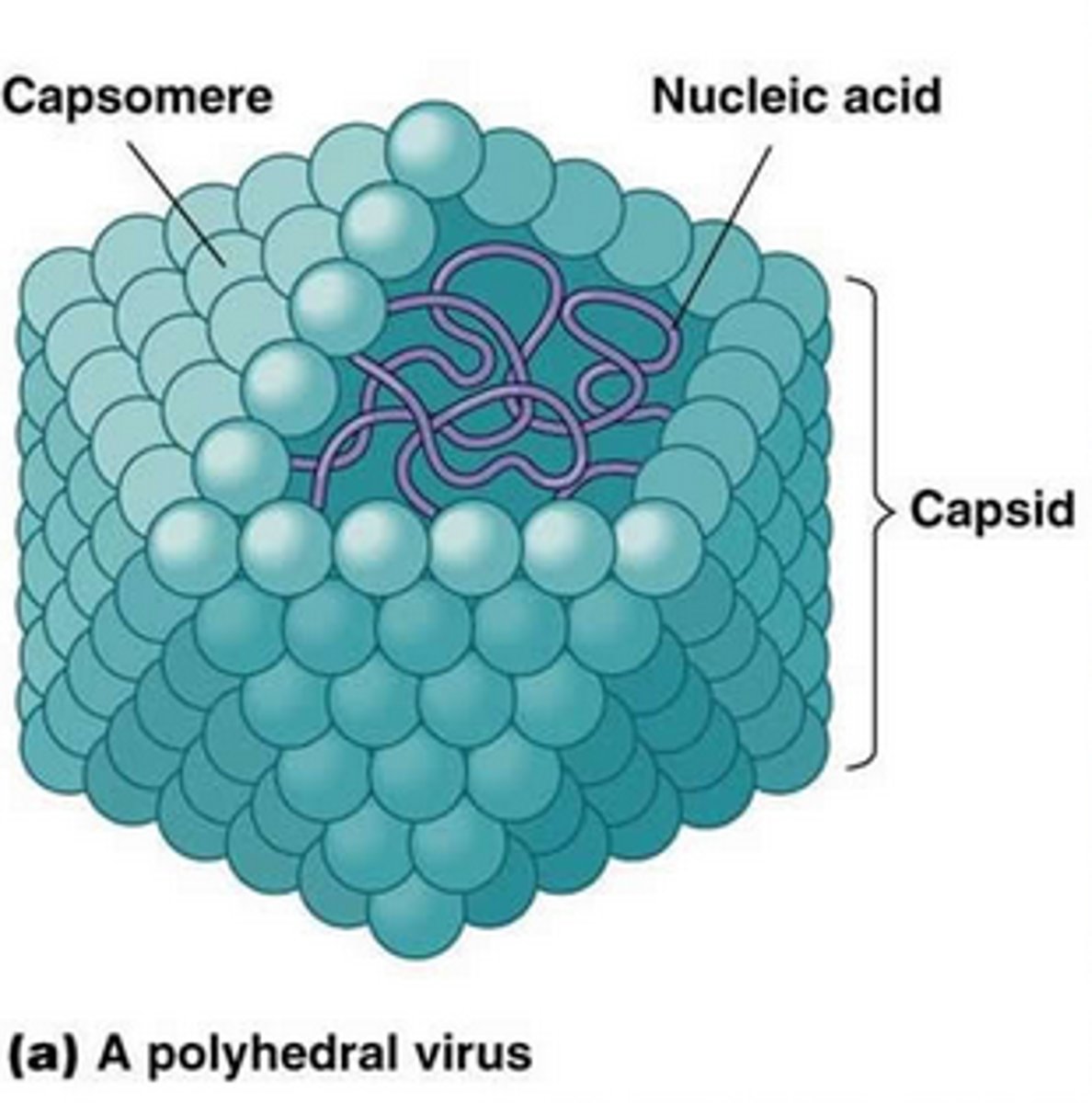
Some viruses have an additional lipid membrane - envelope
Usually acquired from the cytoplasmic membrane of an infected cell. The structure is similar. Double layer of lipids
Just inside the lipid envelope is the protein matrix
Spikes project from the envelope and attach the virion to the host cell. Protein and glycoprotein
Papovaviridae, Adenoviridae, and Iridoviridae
classification of DNA viruses that infect vertebrates ((like humans and animals) are:
Papovaviridae
Naked virion structure
1 molecule, circular double-stranded DNA
human papillomavirus associated with genital and oral carcinomas
Adenoviridae
Naked virion structure
1 molecule, double-stranded DNA
causes tumors in animals
Iridoviridae
Naked virion structure
1 molecule, double-stranded DNA
no known human pathogens; only animal pathogens
zika virus
is a single stranded RNA virus
microcephaly where the baby's head is much smaller than it should be
If a pregnant woman gets bitten by an infected mosquito, it can impact the baby and cause:
very warm mosquitoes and typically do not show up in Indiana
The mosquitoes that carry the Zika Virus are:
attachment, penetration, transcription or translation, replication, assembly, and release
Viral replication includes:
attachment
Phages attach to host cell receptors
phage = viral
Penetration
Viral nucleic acid enters the host cell
Lysozyme (located on the tip of the tail) lyses the cell wall
The tip of the tail opens, and linear DNA in the head passes through the channel and is injected through the cell wall into the interior of the cell
Only the nucleic acid, not the entire Virion enters
transcription or translation
Phage DNA is transcribed, leading to the production of specific proteins
Part of DNA is transcribed into mRNA
mRNA is translated into proteins that are specific for infecting the cell (phage-induced proteins). One such protein is a nuclease that degrades the DNA of the host cell. Host DNA is not transcribed, only phage DNA
replication
Phage DNA copies itself and structural proteins are synthesized
Assembly
Phage DNA and protein assemble to form mature virions
Some steps involve a self-assembly process
Release
Virions are released from the host cell
Lysozyme is coded by phage DNA. Lysozyme digests the host cell wall from within. Cell lysis and release of phage virions (up to 200)
Laboratory Diagnosis of Viral Infections
Cell culture - Living cells (ex. chick embryos)
Serological techniques - Detecting antigens and antibodies
Direct detection of antigen from the specimen - Polymerase chain reaction (PCR)
Molecular methods - Live or dead viruses
Viral Specimens types
Upper respiratory- n/p swabs, nasal, throat
Lower respiratory- endo trach asp., bronch washes, BAL (bronchioalveolar lavage), lung washes, lung and bronchial biopsies
Eye swabs
Stools or rectal swabs
Body fluids - cerebrospinal fluid, bone marrow, serum, blood, and saliva
Viral Specimens collection and storage
Virus isolation and direct detection must be collected within the first few days of the onset of the illness
Specimens should not be held at ambient temperature. Should be delivered to the lab on ice and stored at 4°-8°C (refrigerator) for no more than 1-3 days before excessive loss of infectivity
Freezing at -70°C or below will preserve indefinitely
refrig-freezer back and forth will cause loss of infectivity rapidly because of temperature recycling